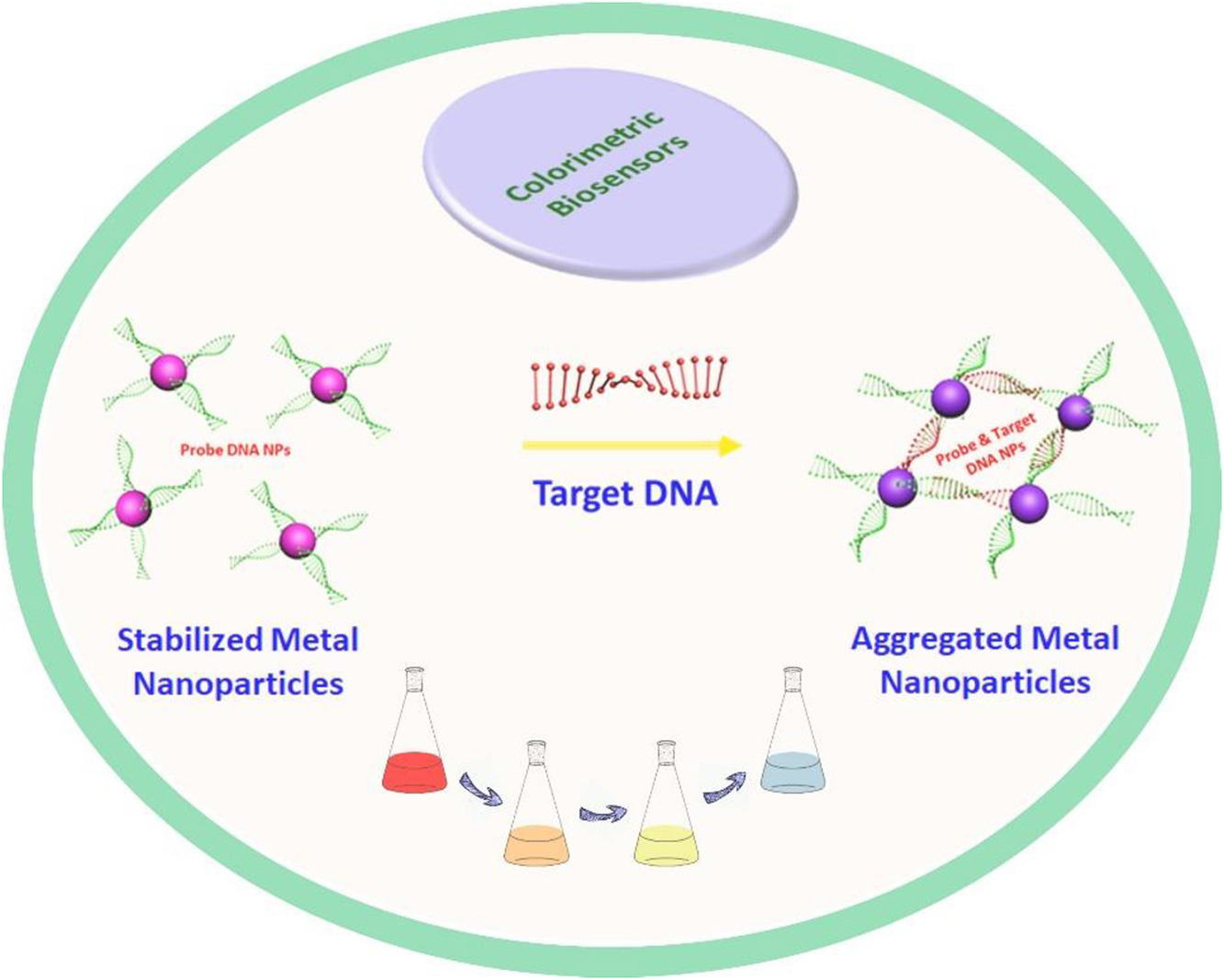
Luminescent coordination polymers with mixed carboxylate and triazole ligands for rapid detection of chloroprene metabolite
Yue Mao, Zhonghang Chen, Tiankai Sun, Wenyue Cui, Peng Cheng, Wei Shi* Submit a Manuscript
Bharathi Natarajan, Palanisamy Kannan*, Longhua Guo*
Chin. J. Struct. Chem., 2024, 43: 100349. DOI: 10.1016/j.cjsc.2024.100349
September 15, 2024
Metallic nanoparticles; Surface plasmon; Biomolecules; Real sample testing; Point-of-care
ABSTRACT
Fascinating physico-chemical features of functionalized metallic nanoparticles (MNPs), which offer a high surface-to-volume ratio, biocompatibility, and flexible functionalities, are considered as potential building blocks in functionalized nano/biointerface, facilitating stable biosensing detection response towards various biological analytes. MNPs-based colorimetric biosensors have received enormous attention in chemistry, biology, and medicine owing to their simplicity, practicality, low-cost, high stability, and selectivity. Principally, the colorimetric biosensing is low-cost; it does not require advanced analytical instruments because the change in color of nanoparticle dispersion can be directly read out via the naked-eye, which is indeed used for on-field analysis and point-of-care (POC) analyses. Notably, MNPs such as gold, silver, iron oxide, and cerium oxide have been used for the simple and facile colorimetric detection of biologically important analytes via changes in various colors. In this review, the biosensing mechanism is based on the change in colors of MNPs toward the detection of clinically important biomolecules (glucose, ochratoxin A (OTA), etc.), deoxyribonucleic acid (DNA), prostate-specific antigen (PSA), α-fetoprotein (AFP), lipopolysaccharide (LPS), carcinoembryonic antigen (CEA), and proteins in various real samples. This promising discipline, at the interface of nanomaterials and biosciences, offers extensive projections for interdisciplinary researchers that comprise nanomaterial preparation, bio-element functionalization, and targeted detection in clinical diagnostics. The potential approaches for new colorimetric substrate design, important biosensing characteristics, challenges, and future opportunities for colorimetric biosensing strategies are also described.






